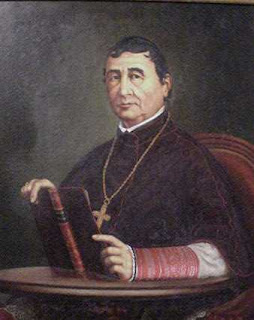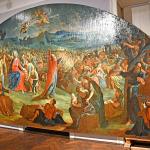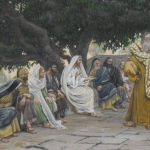Antoine Blanc (b. 11 October 1792; d. 20 June, 1860) was the fifth Bishop and first Archbishop of the Roman Catholic Archdiocese of New Orleans. His tenure, during which the diocese was elevated to an archdiocese, was at a time of growth in the city, which he matched with the most rapid church expansion in the history of New Orleans.More new parishes were established in New Orleans under his episcopacy than at any other time. Antoine Blanc was born in Sury, near Lyons, France. He attended the seminary at Lyons and was ordained in 1816, arriving in North America at Annapolis in 1817. He went to the Louisiana Territory to begin working to establish missions there. After years working as a missioner, Father Blanc was appointed co-administrator of the diocese of New Orleans. In 1831, he was promoted to vicar-general by Bishop de Neckère. In November 1835, Blanc was appointed bishop to succeed de Neckère after his death. Blanc’s jurisdiction included the states of Louisiana and Mississippi, to which Texas was added in 1838. Later the territory was reduced when the diocese of Mississippi was established. In 1853 the diocese of Natchitoches was founded in the northern part of Louisiana. Growth in New Orleans and the region took all of Blanc’s attention. In 1850 the diocese of New Orleans was raised to an archbishopric, and Blanc was promoted. St. Louis Cathedral was established as a cathedral. Monsignor Blanc invited the Jesuits and Lazarites to Louisiana to establish seminaries for the training of priests. He also invited the Redemptorists and the Christian Brothers. He also wanted to establish convents and schools for girls and invited the Sisters of Charity, the Sisters of Notre Dame, the Sisters of the Good Shepherd, and the congregations of Our Lady of Mount Carmel and of the Holy Cross. These new communities of Catholic workers helped the communities and took care of their populations during epidemics and other trials. Blanc also devoted resources and attention to the lives of enslaved people.The new religious also supported the new congregations of English-speaking American migrants and Irish immigrants who had become established in New Orleans and the states since the Louisiana Purchase. By 1832 New Orleans had grown to be the fourth-largest city in the nation after New York, Philadelphia, and Boston. The crisis of a yellow fever epidemic resulted in fatalities of 5% of the population of New Orleans. Blanc died in 1860 in New Orleans while still in office.












